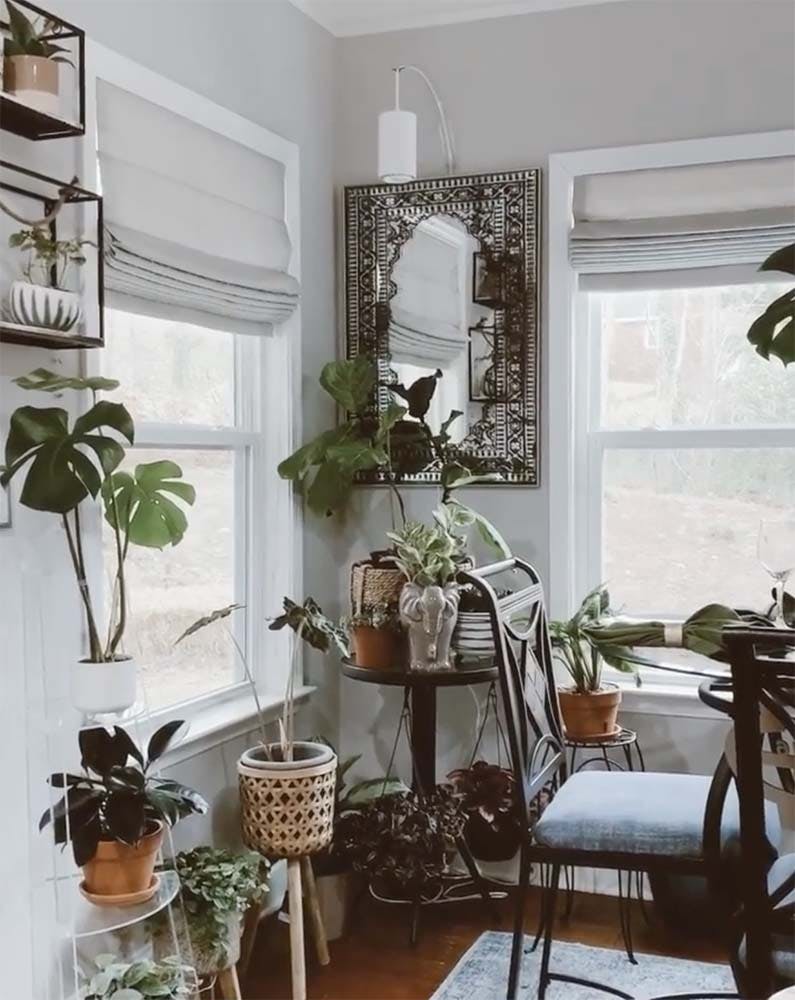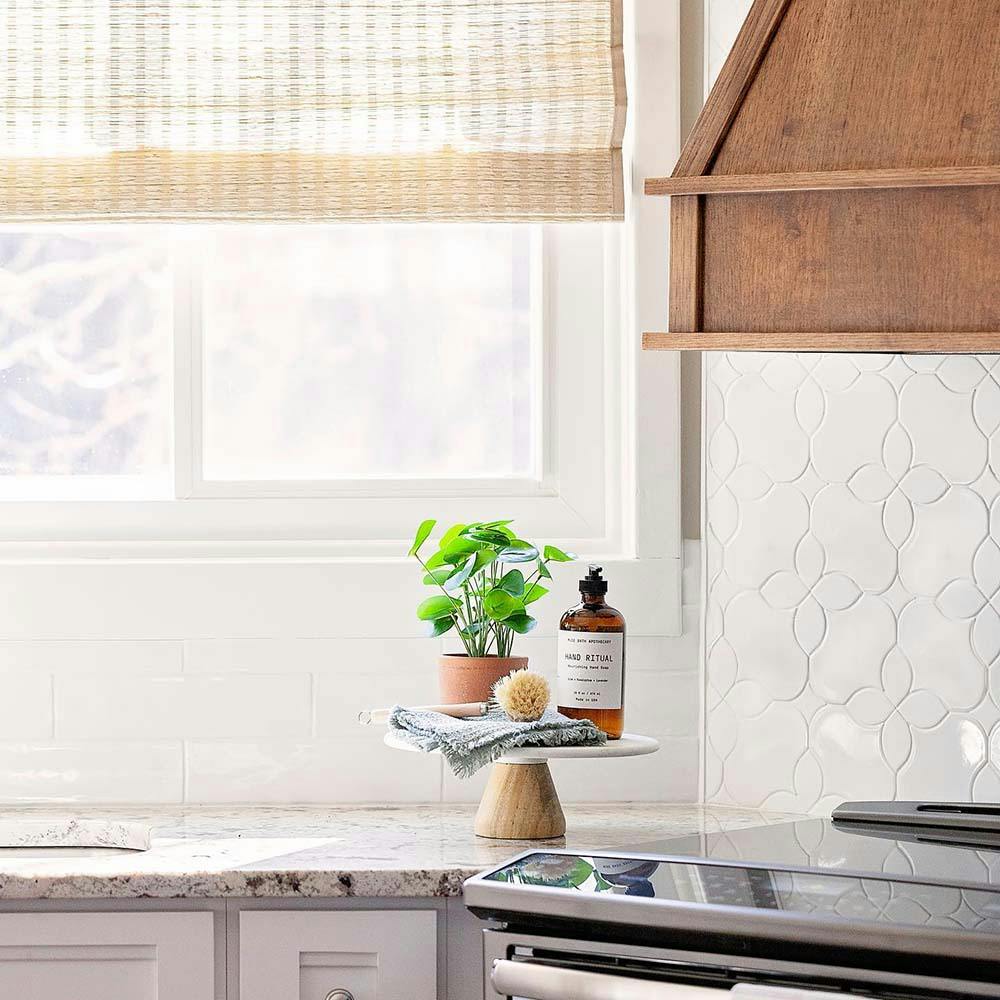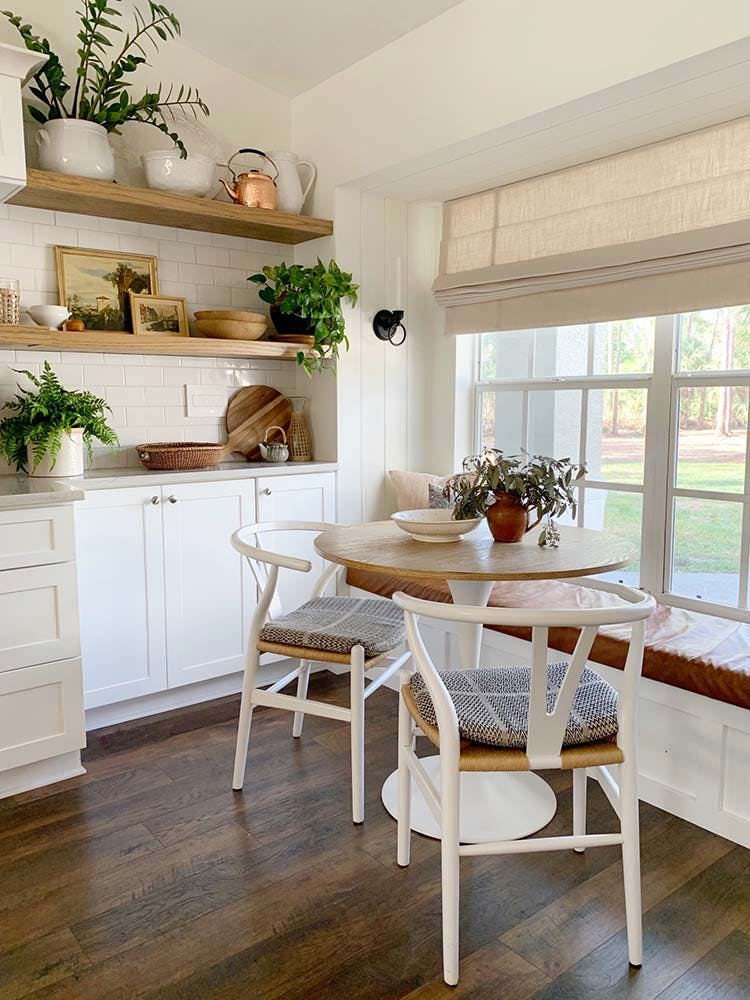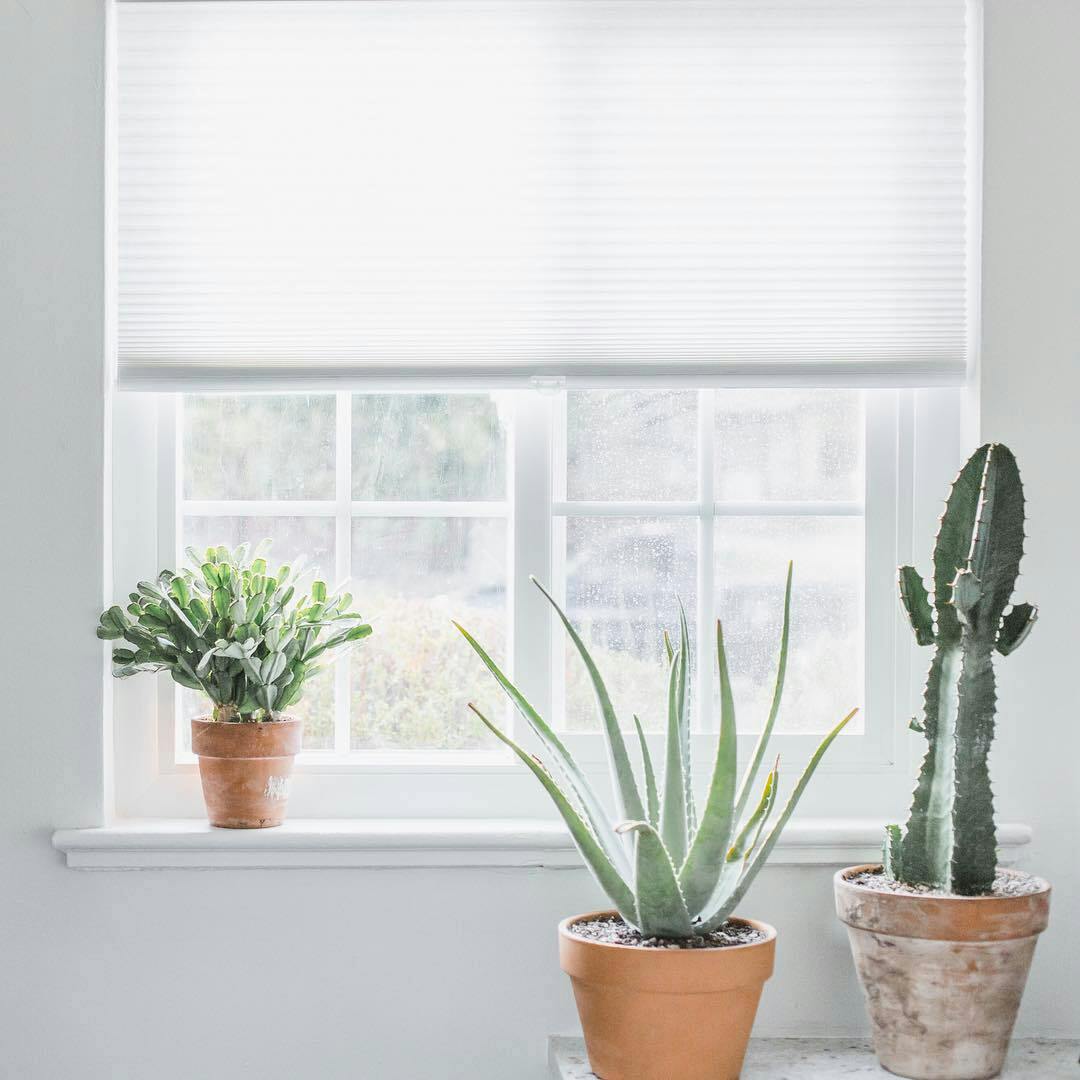
I am not a gardener. I had a cactus run away once. It was during one of those notorious Texas windstorms. I found it's plastic pot in my neighbor's yard the next morning with no cactus in sight. I'd like to say I tried to give it the love it needed but that's probably not true. I am not a gardener.

Pictured: Blinds.com Premium Roman Shades in Gent Greystone. Photo via @itsshanajaye.
I've always envied those plant parents with window sills of gorgeous fronds casting meandering shadows across the floorboards. We get tons of photos from customers showing off their new window shades alongside their verdant army. I think to myself "Their homes must smell so fresh".
While we're all social distancing, this seems like the perfect time to grow my green thumb. Lucky for me, Blinds.com has a resident garden guru: Josh Hebert from @masterplantkiller. Josh is an internal support team member at Blinds.com with a passion for plants on the side. I sat down with him (via video chat) for tips on being a good plant parent and how to get started.
What's the difference between indoor and outdoor plants?
Lighting, water and temperature requirements all factor into whether a plant can thrive indoors or would do better outside in full sun. Your local climate will be a major factor in determining where a plant should be placed. Plants that do well outdoors in northern climates may struggle with summer heat in the south.
Can plants get enough light through light filtering shades?
Absolutely, but it will depend on the specific type of plant. Choose a plant that has low light requirements or prefers some shade to give it the best chance. A plant that wants tons of sun may not be the best choice for a shaded window. Also consider which direction your windows face. If one side of the house is always in the shade, your houseplants may do better in a window on the other side of the house.
If you plant needs indirect light but the window you want to put it in gets a ton of sun, consider adding a light filtering shade like the Blinds.com Premium Light filtering Cellular Shade. Or for more earthy texture, the Blinds.com Deluxe Woven Wood Shades in an open grass weave like Girona Raffia.

Pictured: Blinds.com Deluxe Woven Wood Shades in Girona Raffia. Photo via @mychildhoodcolonial
What are some great houseplants recommended for beginners?
Pothos plants are great for beginners. It's a viney plant that does well in a variety of lighting conditions including fluorescent office lighting. They are also resistant to over or under-watering.
ZZ plants are also a good choice. They require little attention needing to be watered maybe once a week. The ZZ Raven is a really striking, almost black color. Very dramatic.
Sticks on Fire is a succulent (cactus-like plant) that gives off brilliant red, orange and yellow hues as it grows.
Fruit trees are great too. You do not always need a ton of space and many fruit trees (like lemons) are happy to live within a large pot.

Pictured: Blinds.com Premium Roman Shades in Gent Vanilla. Photo via @hartley_home.
What should you look for when choosing a plant?
Perky leaves. If leaves are drooping this could be a sign it has not gotten enough light or water. Look for dead leaves or disease spots. This could signal that a plant is on it's way out.
Also always make sure your pot has a drainage hole in the bottom. Without one, it's very easy to over-water.

Pictured: Blinds.com Premium Light filtering Cellular Shade in White. Photo via@abigailmarygreen.
Tips For Starting Your Own Plant-Army Without Traveling To A Nursery?
Cuttings are pieces from an existing plant (like a branch) that you can use to "propagate" or make more of the same plant. With patience and care, you can encourage the cutting to establish roots and grow. The key is to keep the cutting moist at all times. Cuttings are vulnerable to drying out very quickly.
What Kind of Maintenance Do Houseplants Need?
Of course, plants need regular watering. How much water your plant needs will vary. Some plants prefer to be watered weekly, other Additionally, if you're using standard potting soil, these bags usually have fertilizer mixed in that lasts for 6 to 9 months. After that time you can find plant food (or fertilizer) at your local garden center or Home Depot.
Read More:
5 Window Hacks That Can Improve Your Mood
This Breakfast Nook Makeover Will Inspire You to Celebrate Small Wins at Home

